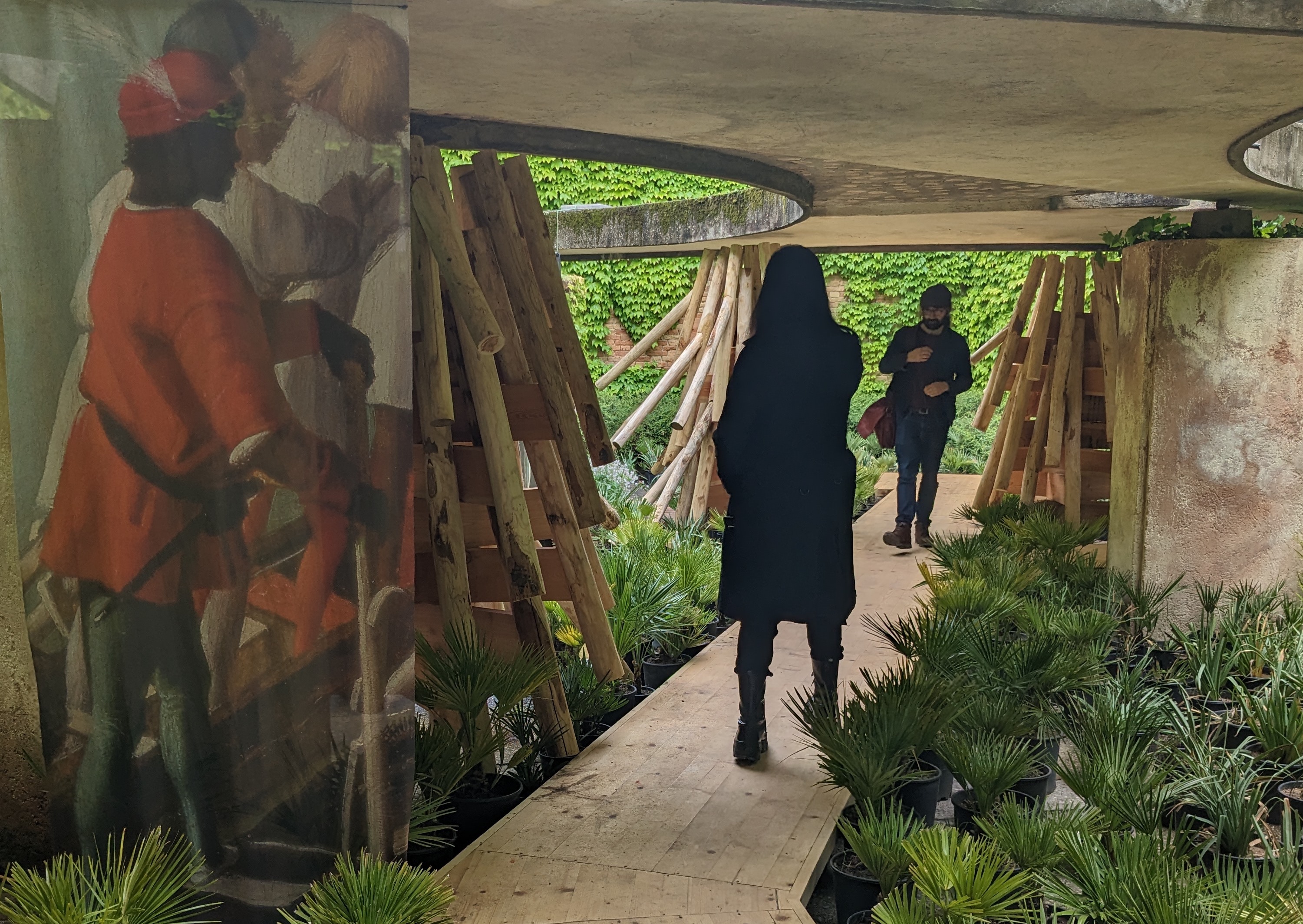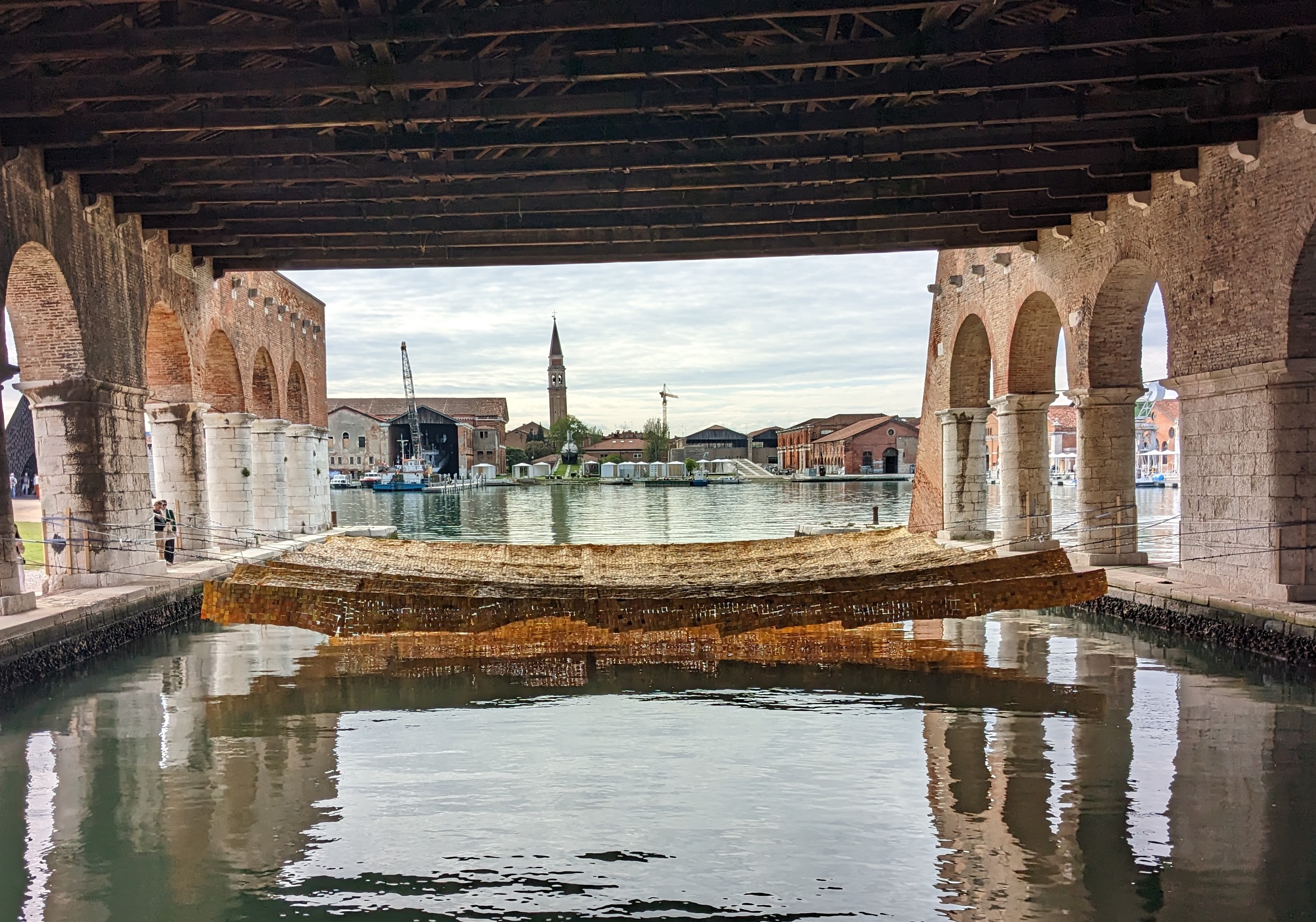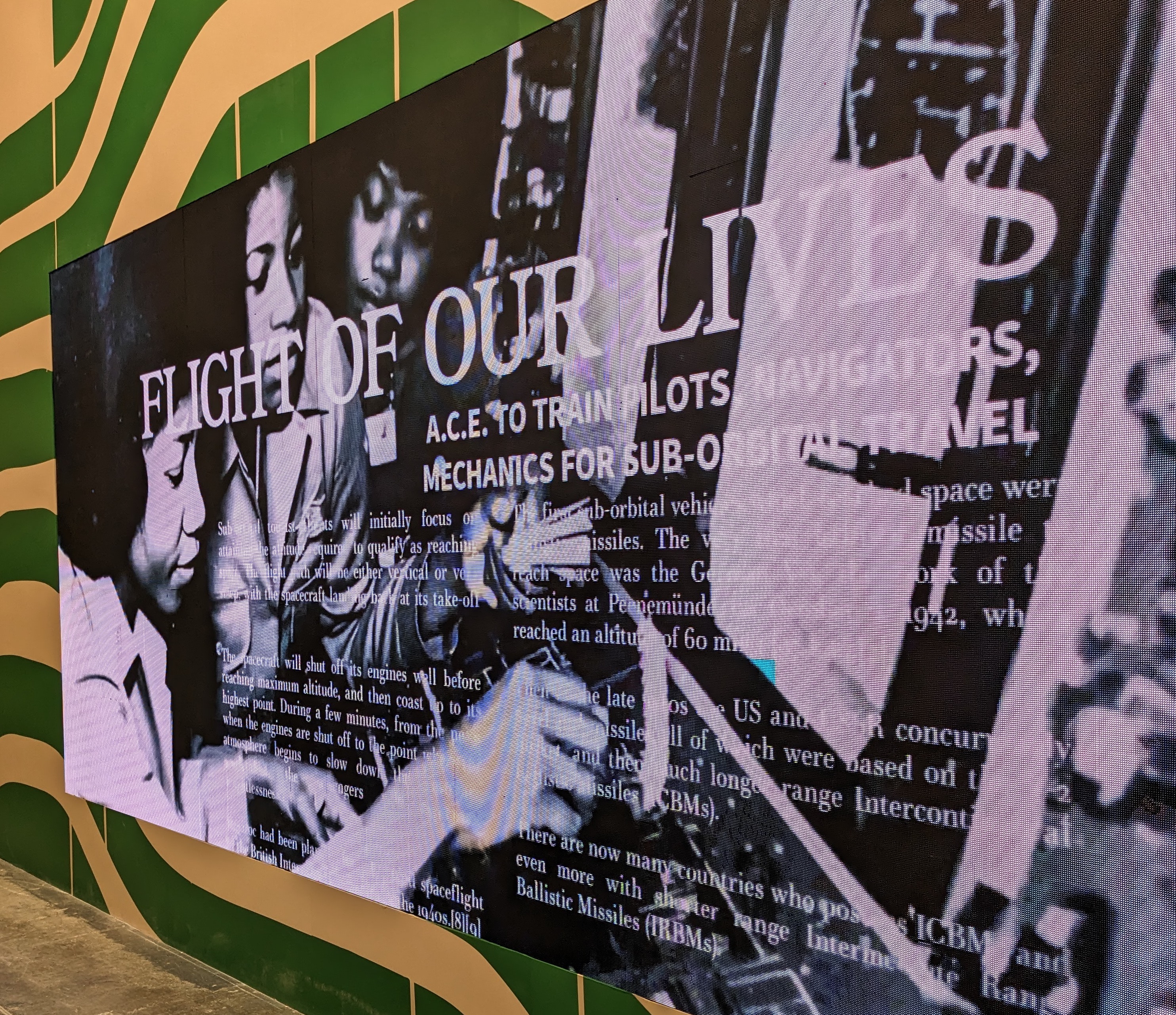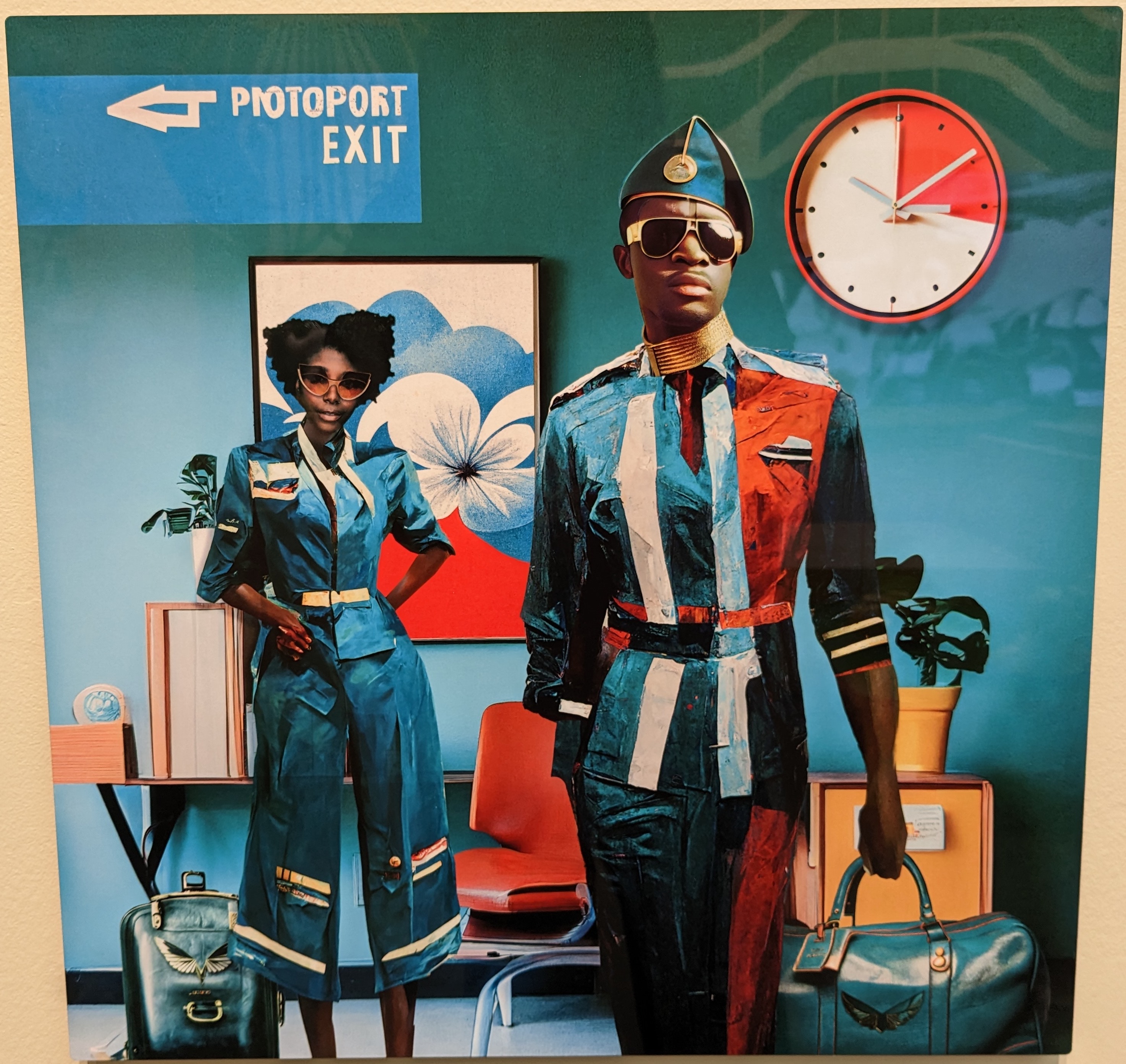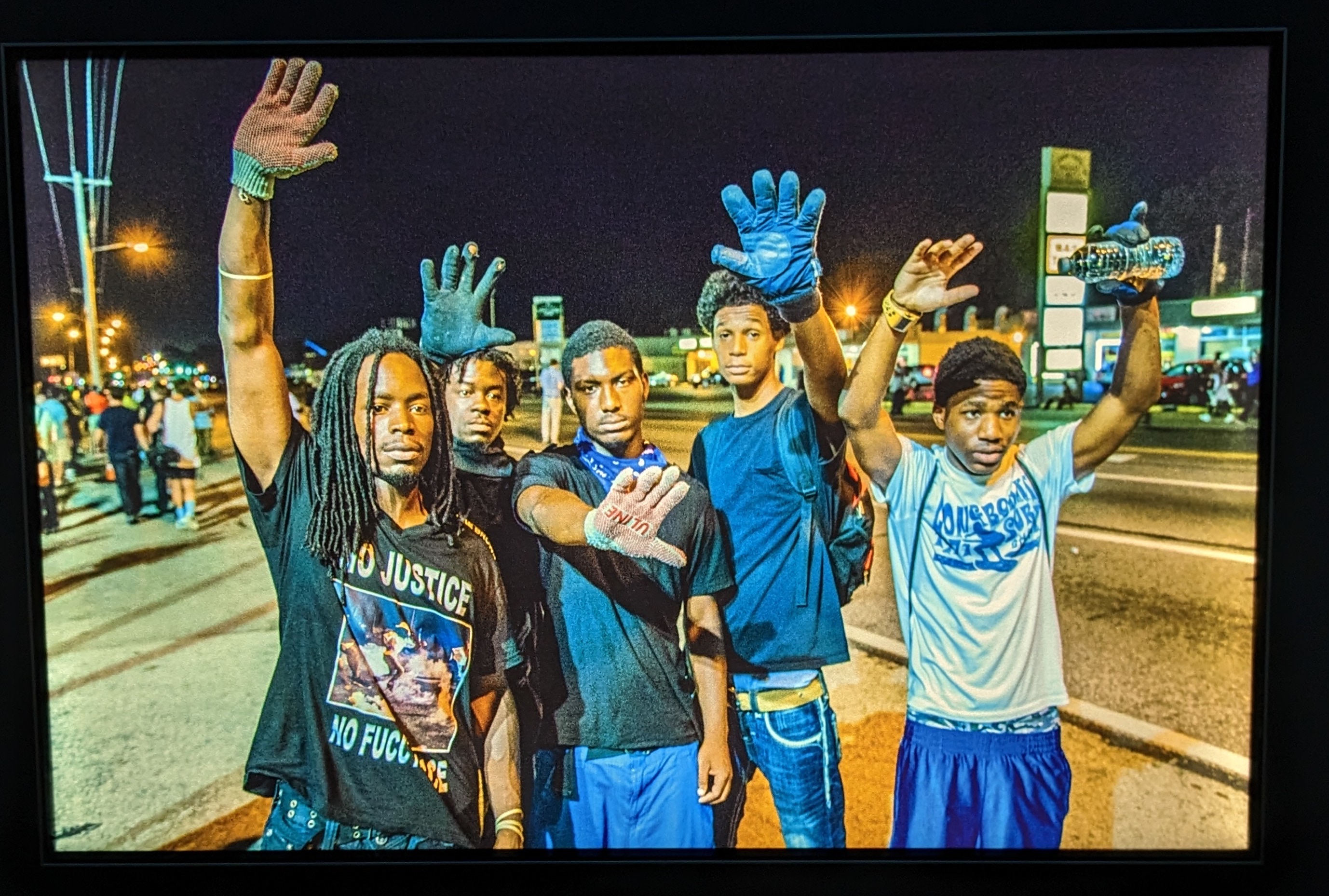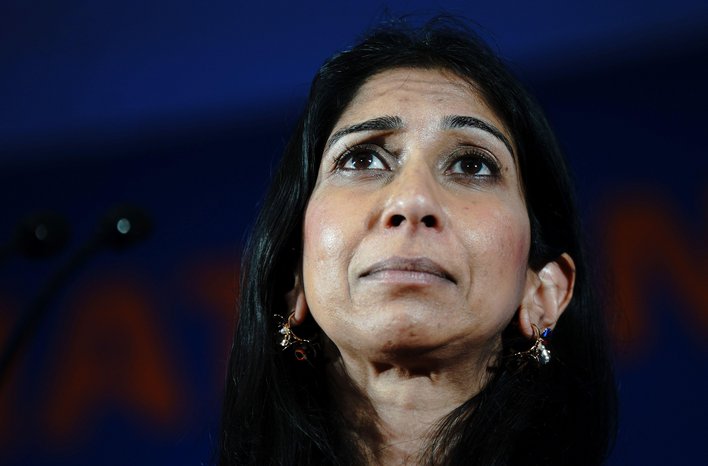Text
I felt fired-up from the moment I arrived - which came as a complete surprise, not because I am uninterested in art or architecture, but because I never expected to feel so welcome.
For the first time, the majority of the exhibitors are from Africa or the diaspora. The exhibition boasts a 50-50 gender balance, and an average age of 43 - which is young by architectural standards. It’s a drastic and necessary redressing of the balance after almost two decades of a dominant Euro-centric output. The show is firmly forward-thinking, with Lokko making a statement about who will (and should) lead the discipline of architecture into the future.
The decolonisation and decarbonisation themes flow seamlessly together - not just as an instruction for the future, but as a new way of looking at the present and the past
This deep sense of inclusion bleeds into every element of the show. I could feel it in the British Pavilion as I watched a film that featured families that look like mine, celebrating the rituals, the food, and the music specific to British Caribbeans and British Asians. I felt a joyful swell of recognition at the archive footage of Notting Hill Carnival, and the gentlemen of the Windrush generation playing Dominoes with a ferocity that triggered a deep nostalgia in me.
I could feel it in the futuristic 'All-African Protoport’ - a space imagining a continent without the hangover of colonialism, a transport hub based on green technologies and Indigenous knowledge, designed by Nigerian-born Olalekan Jeyifous. Set up to feel like a departure lounge, the space lulled me to one of its deep wooden benches and I sat for a while relishing in that transient timelessness specific to airports, overlapping with a timelessness - or out-of-timeness - of another sort.

